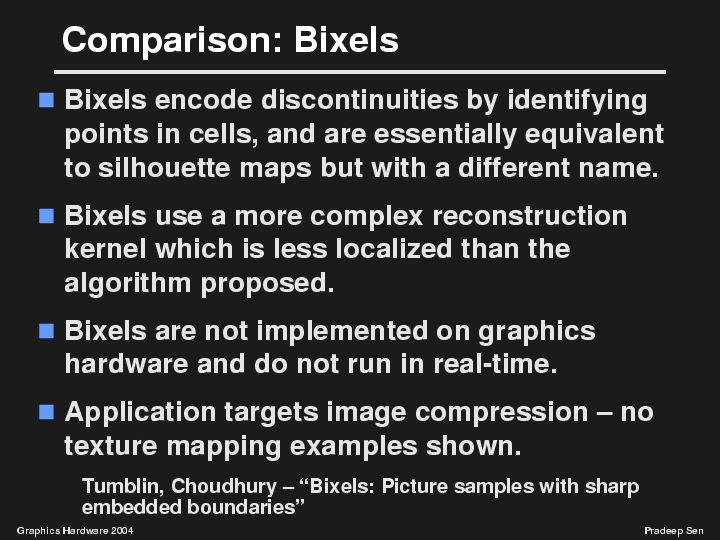
Bixels use a more complex reconstruction kernel than what we do in our work because they take the color samples of neighboring cells into account as well. This complicates the implementation a bit, and to our knowledge bixels have not been implemented in graphics hardware and do not run in real-time. By accelerating our implementation with graphics hardware, we we were able to get 300 fps in some applications as in the demo we saw today.
Finally, they seem to target image compression or image reconstruction, a slightly different application than what we propose. For one, they do not show any examples of texture mapping in their paper. ヱ present silhouette maps as a primitive that can be used in any application where textures are commonly used in computer graphics. That is why we are able to show not only texture mapping examples, but also transparency textures, shader control, and even shadow mapping!